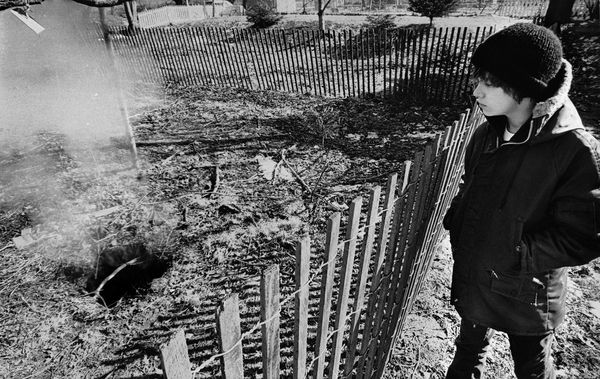In firefighting, mine fires sometimes win.
The Hazelwood mine in the Latrobe Valley has been on fire for over a month, spewing thick smoke onto the nearby town of Morwell. Firefighting operations are expected to continue this week, but the worst smoke is likely to subside with the fire now finally under control.
Residents are angry that it has taken this long — but as far as mine fires go, a month is a very short time indeed. Around the world, mine fires burning since as early as the 17th century continue today.
One coal seam fire in Pennsylvania has been burning since 1962, prompting a permanent evacuation of the town of Centralia after residents became sick, and sinkholes began to open as the seam burnt away.
The Jharia coal field in India has been burning for almost a century, after a fire started in 1916 spread and multiplied through an underground network of coal seams spanning many square kilometres. Tens of thousands of people live above the collapsing seam, and chronic lung disease is common.
Topping the list, the Brennender Berg (burning mountain) in Dudweiler, Germany, has been burning since 1668 — though these days it glows more than burns.
Aside from the health impacts of these fires, the carbon emissions from coal seam fires around the globe are vast. Global estimates suggest that around 3 per cent of global emissions arise from these fires — that’s double Australia’s total emissions. If coal seam fires were a nation, they’d be the eighth-highest carbon polluter in the world.

So, as Morwell residents don facemasks and consider government advice to temporarily relocate, the question of “how much longer” looms. A full evacuation appears to be off the cards, and the worst of the fire is under control — though it’s not unheard of for mine fires to reignite as heat spreads through the seam and finds hidden pockets of oxygen.
One solution that was never on the cards is flooding the mine to kill the flames once and for all. Doing this would render the mine unproductive, and shut down Hazelwood Power station, which supplies around a quarter of the state’s electricity. Efforts to battle the blaze were hampered by the need to avoid using too much water, for fear of damaging electricity infrastructure and cutting power supplies.
This brings to mind a whole suite of ironies. One of the greatest is that our reliance on Hazelwood, the dirtiest power station in the OECD, is unnecessary — both because electricity demand has fallen, and because of a series of decisions to keep Hazelwood open despite its advanced age.
The power plant was due to shut down in 2005, but when the plant was privatised its working life was extended to 2031. In 2011, the Federal Government seriously considered arrangements to close Hazelwood as part of the Clean Energy Future package, but these were also scrapped when negotiations collapsed over the appropriate level of compensation.
Tony Abbott has indicated that his intention is not to close down brown coal power stations, but to clean them up instead; details on how this might be done are scarce.
To me, the deepest irony of this fire is that a wind farm this close to Morwell — or any Victorian town — would be almost impossible to build under current planning laws. In 2011, the state government made it possible for the owner of any dwelling within a two kilometre radius to effectively veto a wind development. You know — for health reasons.
Donate To New Matilda
New Matilda is a small, independent media outlet. We survive through reader contributions, and never losing a lawsuit. If you got something from this article, giving something back helps us to continue speaking truth to power. Every little bit counts.



